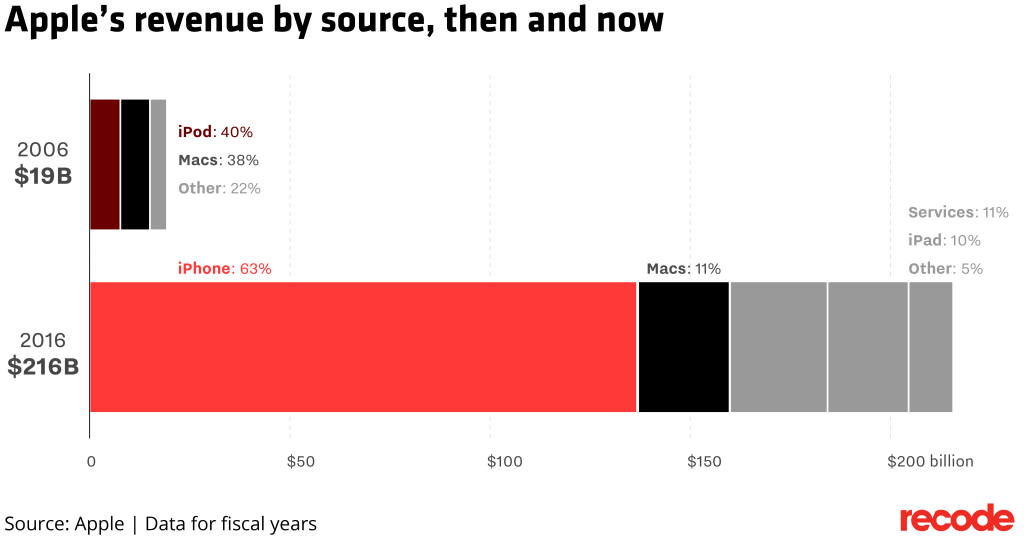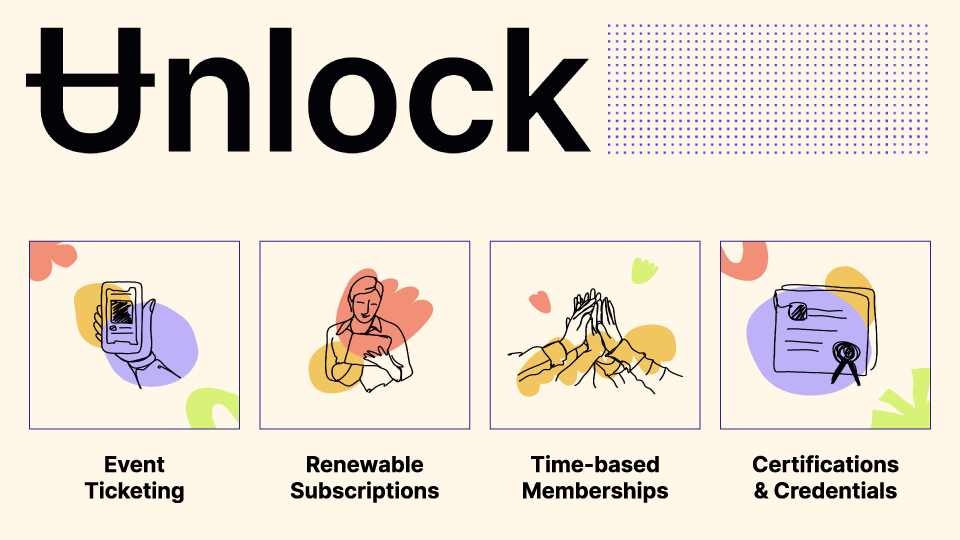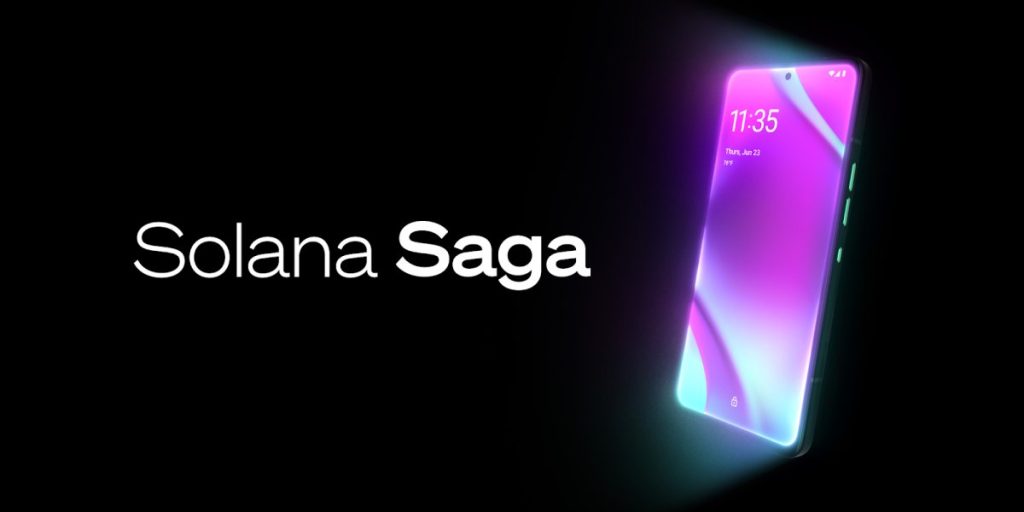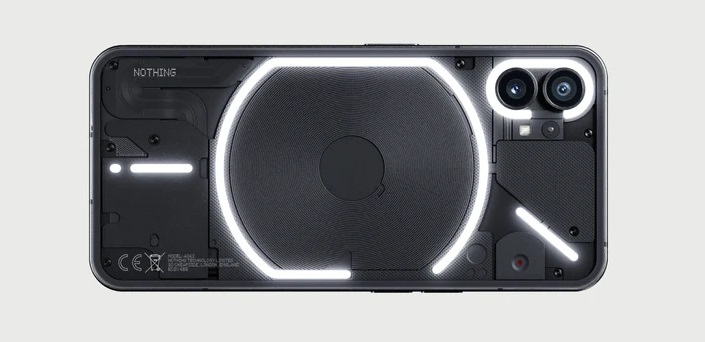
Why Mobile Wallet Hardware Is Key to Web3 Adoption
Before we onboard the masses, we need better UX
No time to read? Get the low down on mobile wallet hardware through your favorite podcast platform 👇
GM web3 DOers!
If you’ve been in web3 for a while, you’ve likely seen or heard people talk about mainstream adoption.
Heck, we also tend to talk a lot about adoption every time some major corporation dips its toes into web3. And it’s happening more and more now as big brands are really starting to see the value of web3 tech. 🚀
But why haven’t we actually achieved mainstream adoption yet?
Some say it’s the UX while others blame it on scams—it’s ironic that immutable, transparent cryptographic technology is held back by security flaws, but it’s true.
At Web3 Academy, we believe that a combination of UX, security and the complexity of the space is what’s holding it back. So how can we improve these and eventually onboard the rest of the world into web3? 🤔
We think it’s going to come from web3-friendly mobile wallet hardware.
In this Deep Dive, we break down:
- The current problems with hardware 😓
- How mobile hardware can support web3 adoption ✅
- Current developments in the mobile hardware space ⚙️
Let’s dive in.
The Problem With Hardware in the Age of Accelerating Innovation
We’re living in the age of exponential innovation, but innovations mostly come through software due to it being extremely scalable and relatively lower cost when compared to the hardware it runs on.
Said another way, hardware is both costly and difficult to develop, and its production relies on a long supply chain of chips and other physical parts.
This is also the main reason why we’ve seen AI tech only just become widely available—we haven’t had the necessary computing power to make it available for mainstream use.
Now, we’ve seen the proliferation of AI because it’s suitable for web2 hardware. Web3 and blockchain, however, aren’t. So we need to develop web3 hardware from the ground up because it’s fundamentally different from what we currently have.
And while we do have web3-friendly technology, such as Ledger, the current UX isn’t suitable for onboarding mainstream users and it still relies heavily on web2 technology. Plus, it is nowhere near as secure as it should be.
However, we’re starting to see web3 DOers recognize the need for secure, user-friendly web3 hardware.
How Mobile Hardware Supports Web3 Adoption
When we say mobile hardware, it doesn’t necessarily mean a typical mobile phone, we’re referring to any device that can easily fit into your back pocket.
But why’s that important?
We believe that over the next few decades, everything will become digitized. We’re talking about money (it basically already is), identification documents, event tickets, ownership documents, and more.
It’s as natural as the progression from the desktop in the early stages of the internet to the mobile phone that put the internet in everyone’s pocket.
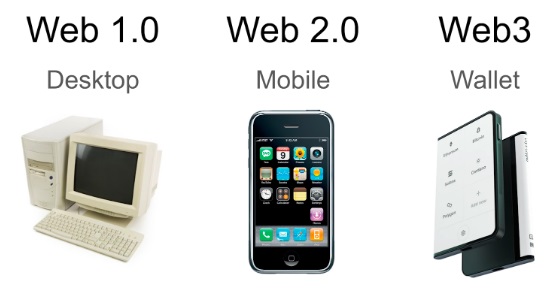
And we believe that most (if not all) of these will be stored on a blockchain in some form or another.
So how can web3-friendly mobile hardware speed up this transition?
By:
- Improving the user experience of web3.
- Giving owners a chance to flex their identity.
- Allowing web3 technology to be more scalable.
- Improving security during web3 interactions.
Let’s break these down further.
Improved UX
Right now, web3 is fragmented AF, to say the least. You’ve got hundreds of crypto wallets and finding new protocols and dapps is unintuitive. Plus, once you do find them, you have to constantly sign in with your wallet anytime you’d like to access them.

Instead, web3-friendly mobile hardware will give you access to all your favorite web3 applications all in one place.
Regardless, in 2022, most people access the applications they use daily through their mobile phones. More and more people are engaging in eCommerce through mobile, people are spending most of their social media time on mobile, and roughly 55% of Americans even prefer banking through a mobile app (compared to 31% preferring to use a pc browser).
On top of this, a mobile device can easily access identity and ownership documents so you can share them if need be.
Just imagine pulling out your laptop at an airport check-in to prove your identity… probably not going to happen, and that’s why web3-friendly mobile devices will drive true adoption of this technology.
Flex Appeal
Ian Rogers, the Chief Experience Officer at Ledger, put it perfectly during an interview with Carly Reilly from Overpriced JPEGs.
He said, “When you buy an Apple phone, you’re not buying a piece of hardware. You’re buying into an ecosystem, you’re buying an experience. And the complexity of the digital asset world is similar. Buying a piece of Ledger hardware isn’t just a commodity, it’s an experience that brings you a secure digital asset experience to your phone.
Ledger has been arguably the top company when it comes to crypto hardware wallets. But until now, their offerings have focused more on the actual utility (i.e., security) rather than creating an experience around the device. That’s why we’re so excited about their upcoming release of the Ledger Stax (more on that later).
But if we know anything about humans, we know they love to flex.

Are Apple phones objectively better than Samsungs? Probably not. So why do they dominate smartphone sales in the US?
It comes down to the experience that Apple sells its audience—sophistication, innovation, and luxury.
Now, if people begin to flex their web3 mobile hardware, it could easily be the reason we see web3 go mainstream. But, it all comes down to how seamless the device’s UX is.
Better UX = Happier Customers = Flex Device = Onboard New People = Experience Good Web3 UX = Flex Device… you get the idea!
Scalability and Distribution
I mentioned it already but it begs repeating, we live in a mobile-first world.
- A staggering 92% of people use a mobile phone to access the internet.
- Most people do their online shopping through mobiles rather than any other device.
- We spend most of our online time through mobile devices and 60% of the world’s web traffic comes from mobile devices.
And that’s a win for web3 because if we can figure out web3 mobile, we stand an extremely high chance of going mainstream.
You can see it demonstrated in the statistics below. While they’re a bit dated now, they still illustrate the extreme adoption rate of mobile hardware.
Ok, so we’ve established that mobile devices are ubiquitous and increase the potential scale of web3 acceptance. But mobile hardware is also an excellent way to distribute and find new applications.
In fact, between 2019 and 2020 alone, there were over 250 million apps downloaded each day, and experts only expect that number to increase.
This is important because the discoverability of web3 protocols and dapps is difficult, to say the least. But a “dapp store” and seamless UX can flip that fact on its head.
Better Security
Now, you might be thinking, “even if my whole life becomes digitized, I can still do everything I need to through my laptop, right?” 🤔
Well, yes and no.
The UX of completing crypto payments and interacting with different dapps currently requires you to use browser extensions. This creates obvious challenges and limitations for developers. Not to mention that it’s much easier to prove your identity through face recognition on your phone.
In the future, you’ll be able to pay for your morning coffee with stablecoins from your phone just like you currently do with Apple pay. It’s seamless. It takes zero effort.
But outside of that, if crypto and web3 truly eat the world like we think they will, most of your life will be on-chain (think money, identity, etc.). And if you want to use and share this information securely it must be done through the right hardware because if someone is able to hack your device, you could lose everything.
And that’s the problem with our current web2 hardware. It doesn’t reach the necessary level of security to completely protect our on-chain activities.
Blockchains are extremely secure, but, unfortunately, the current endpoints we use to access the technology aren’t. That’s why we need web3-first mobile hardware and the good news is they’re coming.
🤝 Together with Unlock Protocol: NFT Ticketing is the Future. Learn How to Easily Create and Sell NFT Tickets for Your Next Event!⚡
3 Current Developments in Web3 Mobile Hardware
Right now, there are three main mobile hardware options that are potential contenders for helping us go mainstream.
Some are still in development while others are close to distribution or have minimal blockchain integrations currently active.
Here’s what you can expect over the next year:
1. Solana Saga
Solana’s mobile phone has been hotly anticipated with an estimated shipping time of early 2023.
The web3-centric device promises the ability to run dApps and other decentralized applications natively on the phone, without the need for a separate computer or device. It will also feature a hardware wallet for securely storing and managing cryptocurrency assets, a secure enclave for storing sensitive data, and a decentralized identity system.
Tired of signing transactions in your browser wallet? Solana’s Saga will allow you to do it with a simple fingerprint. That’s the type of UX we need for web3 to go mainstream.
Besides its web3 integrations, the Solana Saga also packs some powerful hardware which includes 12GB of RAM, a 50MP camera, plenty of screen space for comfortable viewing, and the latest Snapdragon processor.
2. Ledger Stax
The Ledger Stax announcement is what actually sparked our desire to write this Deep Dive, and for good reason.
Ledger has many years of experience in building impregnable hardware that keeps your assets safe at all times. But now, they’re turning their attention to the hardware’s UX.
Ledger Stax features a sleek, palm-sized touch screen that’s the perfect replacement for your wallet when the world goes digital. 😲
Joking aside, Ledger puts security first, so much so that they’ve never had a security breach. That means any of the 500+ tokens (if using the Ledger Live app) or 5,000+ tokens (if using a third-party wallet) are safe and sound at all times.
Like Solana’s Saga, Stax is designed to be a user-friendly interface for interacting with decentralized applications (dApps) and other web3 technologies. It includes a number of features that are designed to make it easy for you to manage your digital assets, including a wallet, marketplace, and tools for managing and tracking investments.
However, the Stax does require you to connect it to a smartphone or computer through Bluetooth before you can use it.
3. Nothing Phone 1 (Polygon)
On its own, the Nothing Phone has been hyped as one of the top developments in the smartphone space. In fact, TIME even recognized the phone as one of the best inventions of 2022.
But recent news about the phone’s integration with Polygon is what caught our attention. There’s been no official announcement about the extent of blockchain integrations with the Phone 1, but their website does mention native NFT gallery functionality.
However, Polygon has shared that it will enable similar features to the others on this list, i.e., cryptographically-secured ID verification, access to dapps and digital assets, and more.
When these features arrive we can’t say, but we do know that everything Polygon touches turns to gold. 🥇
Outside of that, the Phone 1 features an extremely unique design, promises a smooth user experience and offers an open ecosystem for third-party development—a perfect fit for web3.

SOCIALS
Meme of the Week

Web3 Mobile Hardware is the Reason We’ll Go Mainstream
Right now, I feel like we’re stuck between a rock and a hard place.
On one hand, web3-natives are seeing the glaring issues with custodial wallets (wallets controlled by a centralized entity, think FTX, Binance, etc.). They know that they can’t trust these entities with their investments, but the UX these platforms provide is far superior to what we can currently achieve with mobile hardware.
So after the post-implosion dust settles, many people go back to these centralized entities, and the cycle continues. ♻️
Then, on the other hand, we have people looking at crypto from the outside, and what do they see? Billions of dollars being siphoned out of web3 through hacks and scams. We also see plenty of web3 newbies get rekt because centralized entities are the only way they can interact with the space without getting a headache.
Outside of that, interacting with web3 is just damn confusing sometimes—especially when it comes to signing messages in a wallet. 😵💫
Even as a web3-native it can be difficult to understand what permissions a particular signature is giving and to who.
Web3-friendly mobile hardware has the potential to change that. It has the potential to make interacting with web3 as seamless as checking our emails.
And when that happens, off to the moon we go. 🚀

FOR THE DOERS
Take Action & Level Up
LEARN
Take our FREE Web3 Rabbit Hole Course to get up-to-speed on the foundational components of Web3 so you can confidently build, work, or use the fastest growing technology in history.
JOIN
Head over to the Web3 Explorers Club to share your thoughts and learn from other people in the web3 community!
READ
Get up to speed on The 6 Most Important Web3 Trends for 2023




